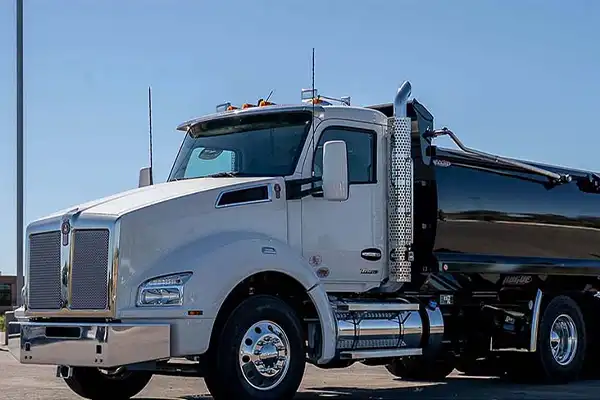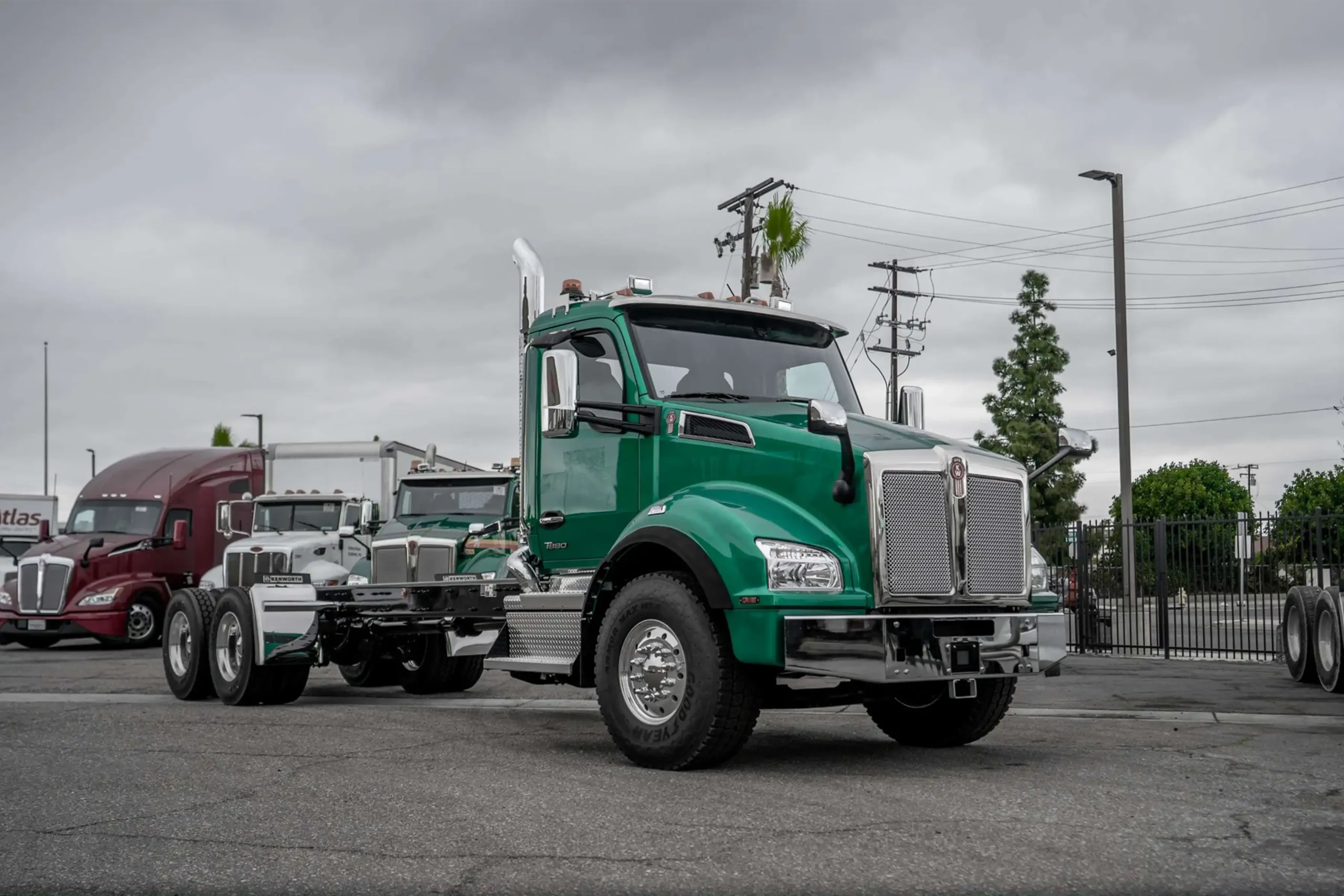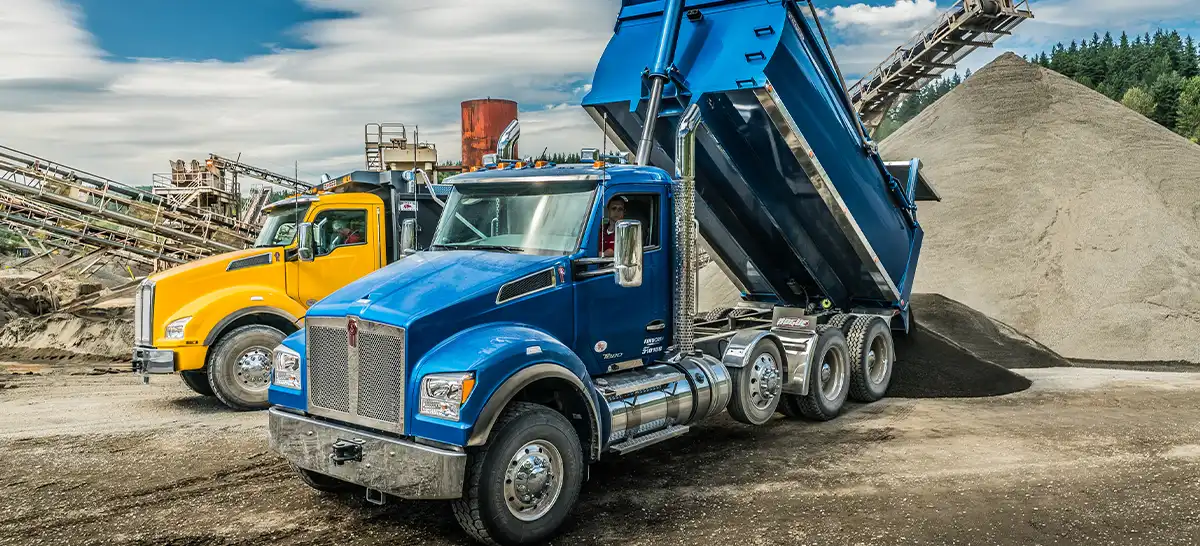
Whether you’re in construction, resource hauling, or municipal work, the dump truck is the undisputed workhorse of your operation. Making the right choice in a dump truck is a critical business decision that directly impacts your efficiency, operating costs, and legal compliance. With configurations ranging from nimble single-axles to robust tri-axles, the options can feel overwhelming.
This guide will break down the differences between single, tandem, and tri-axle dump trucks. We’ll explore the key factors you need to consider before you start looking at any dump trucks, helping you invest in a machine that’s perfectly suited to your needs.
Why Axle Configuration is Critical for Your Dump Truck
Before diving into the different truck types, it’s good to understand why axle configuration is important. A truck’s axle setup determines its Gross Vehicle Weight Rating (GVWR).
This rating is the highest legal weight for the vehicle. It includes the chassis, body, fuel, driver, and most importantly, the payload. Federal and state laws regulate GVWR to protect roads and bridges from damage.
To put it simply, the number of axles dictates how much weight you can legally carry. Choosing the wrong setup can lead to fines, premature wear on your truck, or lost revenue from not maximizing your payload.
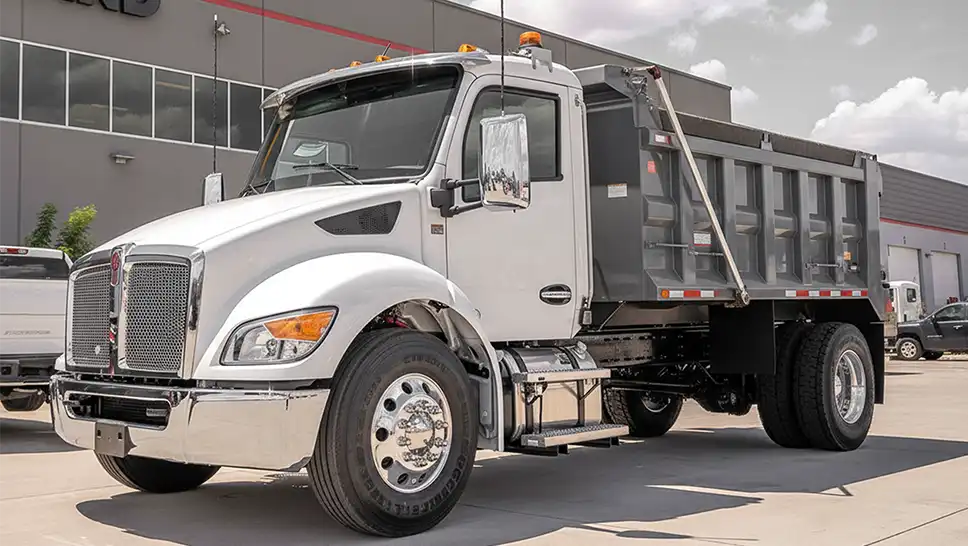
The Agile Choice: Single-Axle Dump Trucks
A single axle dump truck is the most basic and agile configuration. It features one rear axle with two to four wheels. These trucks are smaller and lighter, making them ideal for navigating tight job sites and residential areas.
Best For: Landscapers, small contractors, and municipal public works departments.
Common Payloads: Sand, gravel, dirt, and mulch for smaller-scale projects.
Pros:
- Excellent Maneuverability: Their shorter wheelbase makes them excellent for urban environments and crowded job sites.
- Lower Initial Cost: They are generally more affordable to purchase than their larger counterparts.
- Reduced Operating Costs: Fewer tires and better fuel economy lead to lower long-term expenses.
Cons:
- Limited Payload: The single rear axle significantly restricts how much material you can haul.
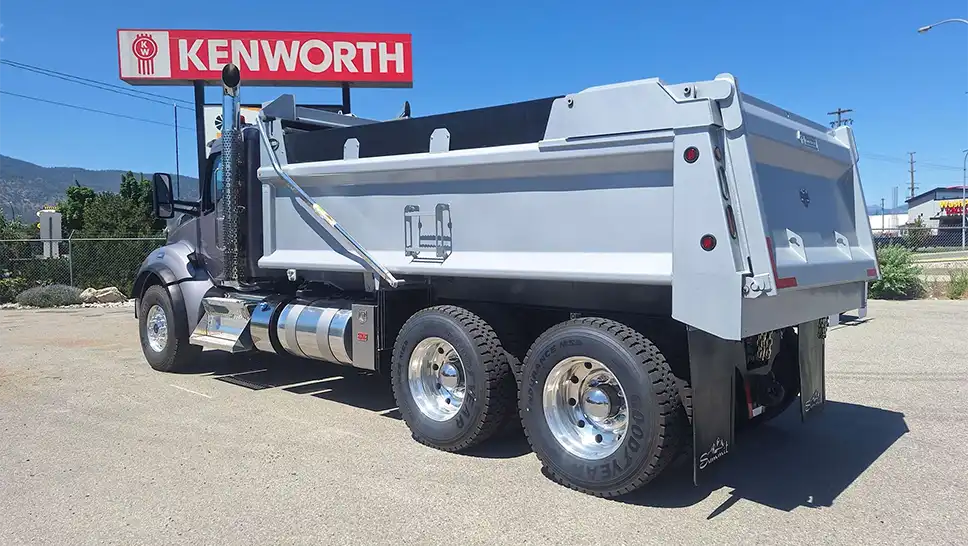
The Industry Standard: Tandem-Axle Dump Trucks
Tandem dump trucks are the most common configuration you’ll see on job sites. These trucks have two rear axles sitting close together, which allows for a much higher legal payload capacity compared to a single axle model. This is the go-to choice if you are interested in a versatile, all-around performing dump truck.
Best For: General construction, excavation, aggregate hauling, and medium-to-large-scale commercial projects.
Common Payloads: Heavy gravel, rock, demolition debris, and other substantial loads.
Pros:
- Increased Payload Capacity: You can legally carry much more weight than a single axle truck. This makes job sites more efficient.
- Greater Stability: The dual axles provide a more stable platform, especially when dumping heavy or uneven loads.
- Versatility: It strikes a perfect balance between capacity and maneuverability for a wide range of jobs.
Cons:
- Higher Cost: More expensive to purchase and maintain than a single axle truck.
- Reduced Maneuverability: The longer frame makes it more challenging to navigate in tight quarters.
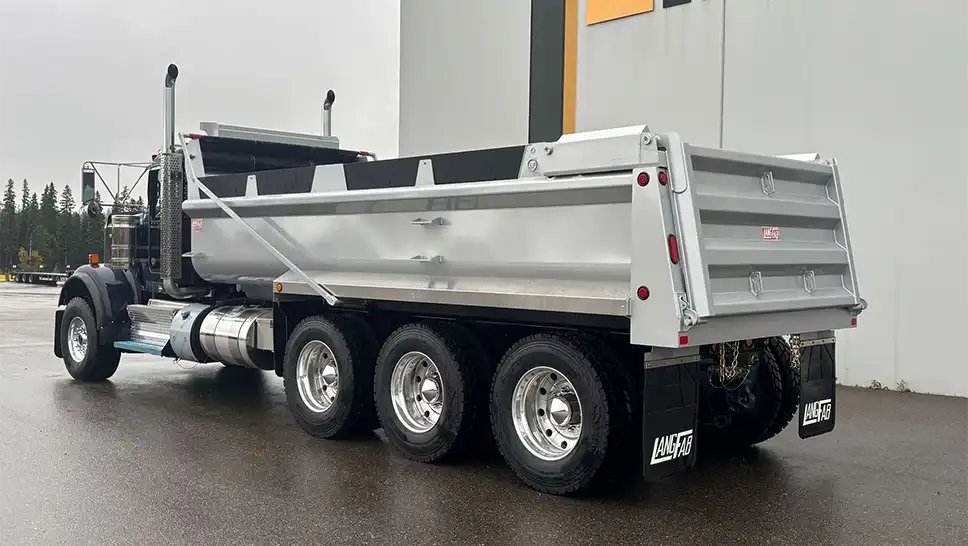
The Heavy-Hauler: Tri-Axle Dump Trucks
When maximum payload is the top priority, the tri-axle dump truck is the definitive answer. By adding a third rear axle (often a lift axle that can be raised when unloaded), these trucks are built to carry the heaviest loads legally possible. This configuration is essential for heavy-haul applications where maximizing material transport is paramount.
Best For: Heavy construction, large-scale excavation, quarry operations, and long-haul material transport.
Common Payloads: Large quantities of aggregate, asphalt, and other high-volume materials.
Pros:
- Maximum Payload: Unmatched hauling capacity allows you to move more material in fewer trips, boosting productivity.
- Excellent Stability: The tri-axle design offers the highest level of stability for the heaviest and most demanding loads.
Cons:
- Highest Initial Investment: These are the most expensive dump trucks to purchase and maintain.
- Limited Maneuverability: Their length and weight make them unsuitable for small or congested job sites.
- Stricter Regulations: Subject to more complex bridge laws and weight regulations that can vary by jurisdiction.
Specialized Hauling: Understanding Quad-Axles and Super Dumps
For operations demanding payload capacity that goes beyond a standard tri-axle, you enter the realm of specialized heavy-haul trucks: the quad-axle and the Super Dump. The existence of these trucks is a direct response to complex transportation laws. Specifically, the Federal Bridge Gross Weight Formula in the United States.
The Quad-Axle Dump Truck
A quad-axle dump truck, as the name implies, utilizes four distinct axle groups. It typically builds on the tri-axle design by adding a fourth axle, which is often a liftable “pusher” axle situated in front of the rear drive axles.
The sole purpose of this extra axle is to distribute the load over a greater number of points, allowing for a higher legal GVWR. This makes the quad-axle a logical step up for contractors who consistently need to haul more than a tri-axle can legally allow but don’t require the absolute maximum capacity.
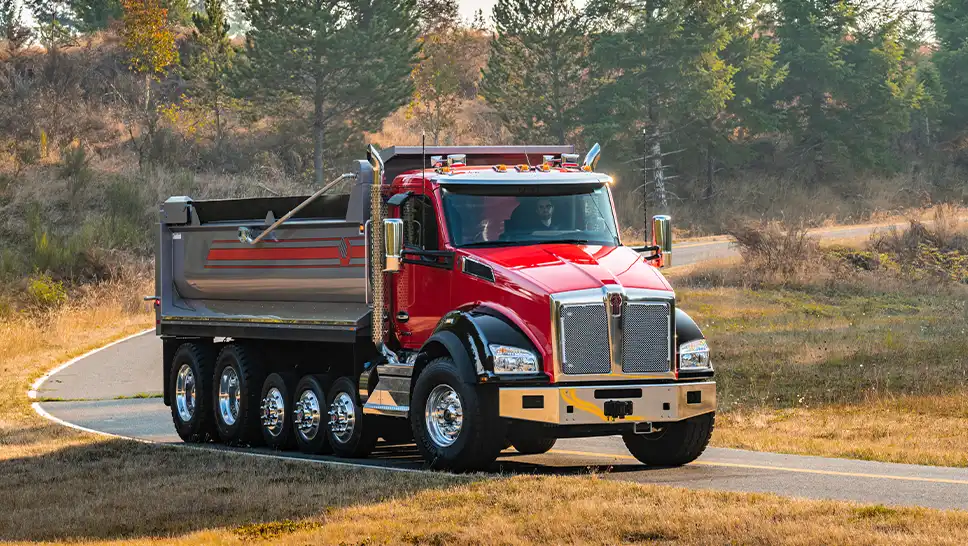
The Super Dump: Engineering for Maximum Payload
The Super Dump represents the pinnacle of straight-truck hauling capacity. A Super Dump is a highly specialized configuration where the fourth (or even fifth) axle is a trailing axle set far behind the drive axles. This axle, often on a liftable arm, can extend the truck’s total wheelbase significantly—sometimes by an additional 11 to 13 feet.
This enables a Super Dump to achieve a GVWR of up to 80,000 lbs in compliant areas, carrying payloads of up to 26 tons. That’s a capacity that rivals some tractor-trailer setups but with the maneuverability and efficiency of a single-chassis truck.
Who Needs These Trucks? The choice between a tri-axle, quad-axle, and Super Dump is a strategic business decision. These specialized trucks are ideal for:
- Quarry Operations: Moving massive volumes of aggregate from the pit to processing plants.
- Major Infrastructure Projects: Hauling asphalt and other materials for highway construction where efficiency is paramount.
- Specialized Material Haulers: Any business in a region where bridge laws make these configurations profitable and legal.
Ultimately, investing in a quad-axle or Super Dump is a calculation of ROI. The higher initial cost must be justified by the ability to carry significantly more payload on every single trip, boosting revenue and reducing the number of trucks and drivers needed for a job.
The Shape of Success: Choosing a Dump Truck Body
Beyond axle configurations, the dump body or trailer type plays a huge role in performance and efficiency. Common options include end dump bodies, which are ideal for quick unloading on construction sites; side dumps, perfect for spreading material along roads; and transfer trailers, which maximize payload for long hauls. The right choice depends on your material type, job site conditions, and unloading requirements.
When considering your options, it’s beneficial to look at offerings from experienced manufacturers. Companies like Spartan Truck Manufacturing and Norwood Equipment provide a variety of dump body solutions to meet specific hauling requirements. Ultimately, taking the time to match the dump body to the job will maximize your efficiency and ensure you’re well-equipped for the task at hand.
Find the Right Dump Truck for the Job
Choosing the right dump truck is a major investment, and it doesn’t have to be a difficult process. By understanding your specific needs—the materials you haul, the job sites you visit, and your budget—you can find a truck that will serve as a reliable and profitable asset for years to come.
Whether you need a basic single axle dump truck for landscaping projects, a versatile tandem dump truck for general construction, or a heavy-hauling tri-axle for major excavation, we have right machine for you.
Ready to find your perfect dump truck? For over 75 years, Inland Truck & Equipment has been a leader in commercial truck and equipment solutions. Our experts are here to understand your needs and help you select the ideal dump truck from our wide range of new and used inventory.
Browse our inventory of new & used Kenworth trucks for sale, or contact our team for a personalized consultation.


